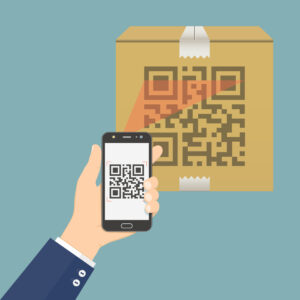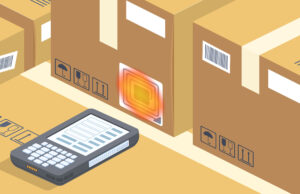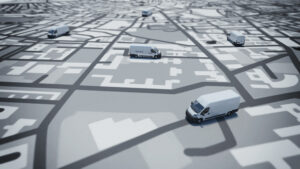Asset tracking is extremely beneficial to businesses, proven by the estimate that by 2025, the global asset tracking market will reach $36.3 billion. As business becomes increasingly digital and assets move across locations on a local and global scale, keeping track of these assets becomes vital. If your business wants to consider asset tracking, read ahead to learn what the benefits are, what common technologies are used, and what questions you need to ask yourself before choosing.
What is Asset Tracking?
When businesses track their physical assets as they move between locations or people, they are engaging in asset tracking. Asset tracking is particularly concerned with the physical assets that belong permanently to a business, such as equipment, rather than temporary assets, such as retail goods. Assets can include items such as medical equipment, construction tools, shipping containers, or vehicles. Assets move differently and understanding the tracking needs of your business and assets, and how different tracking technologies may fit into those needs, is essential for choosing the right tracking strategy.
4 Benefits of Asset Tracking
- Tracking can reduce the amount of loss, misplaced, or stolen items, saving your business money and increasing security in the long term.
- Labour time and costs are reduced, as employees no longer engage in manual, time-intensive tracking methods.
- Your business has a system in place that prepares you for future growth and the associated increase in assets.
- Location records can safeguard your company against compliance questions, allowing you to confirm equipment location and usage.
Choosing the Right Tracking Technology
When choosing which tracking technology is best for your business and tracking goals, you need to consider which features are most important to you and your desired end-use.
Some questions to consider are:
- How valuable are the assets you’re tracking?
- How many assets are you tracking?
- What environment will your assets be in?
- What is the proximity of your assets?
- What level of location accuracy do you need?
- How easily accessible will the asset be?
- Do you need real-time updates?
Whether you want to track hospital equipment, vehicle fleets, or construction equipment, choosing an asset tracking technology is an important consideration for your business. Assets can be tracked through a variety of technologies, and the technology you choose depends on the business and individual asset.
The 7 Asset Tracking Technologies
1. Manual
Manual tracking, such as paper and pen or spreadsheets, has been used throughout history to keep track of assets and belongings. While manual tracking is easy and manageable for small businesses, inventory tracking, or limited numbers of low-value assets, ultimately is inefficient for larger scale tracking. This method does not provide location tracking, so is not suitable for assets that are on the move.
Use Cases: Manual tracking can be used for supplementary tracking when network signals are lost or for limited, localized tracking of low-value assets.
Pros of Manual Tracking:
- Can be used anywhere, no signal or network is required
- Inexpensive
- No electronic interference or battery life considerations
- No special equipment required
Cons of Manual Tracking:
- Easier to make mistakes
- Information easily lost or destroyed
- Harder to standardize information
- Inefficient
- Labour intensive
- No location tracking
2. Barcodes
Barcodes are the most common form of asset tracking and have been used for decades, making them easily recognized and trusted by businesses and customers. Barcodes are affordable and useful for tracking high volumes of relatively low-cost assets. This method is effective for retail and inventory asset tracking but is not suitable or sustainable for assets which require location tracking.
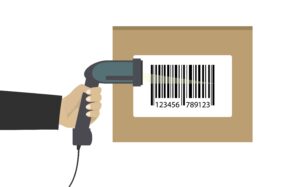
Use Cases: Barcodes are useful for tracking in retail, warehouses, and manufacturing.
Pros of Barcodes:
- Low cost
- Readable by different types of scanners
- Easy to attach
- Small and lightweight
- Global standardization
Cons of Barcodes:
- A direct line of sight is required
- Short range
- Need to be fully visible
- Manual scanning required
- Less durable
- Not suitable for location tracking
3. QR Codes
Quick response (QR) codes first appeared in Japan and are now used for a variety of industries globally. QR codes can provide a large variety of information and can be scanned right from a smartphone, making them widely accessible. Like barcodes, QR codes need to be visible for them to be manually scanned, making them unsuitable for tracking assets across various locations or while they are on the move.
Use Cases: QR codes are useful in the tourism and retail industries.
Pros of QR Codes:
- Global standardization
- Can store more data and complex information than barcodes
- Little to no training is needed
- Easier to scan than barcodes
- GPS tracking available
Cons of QR Codes:
- Hard to scan in weaker lighting
- Short range
- May need an app to read
- Not suitable for location tracking
4. GPS
GPS tags are attached to an asset and send the location to a remote server. Tags can be active or passive, with active GPS being more expensive and precise. This technology is well-known and often used for asset tracking.
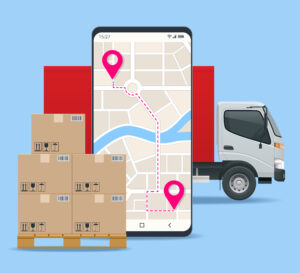
Use Cases: GPS is often used in tracking larger assets like vehicles, construction equipment, and machinery.
Pros of GPS:
- No employee scanning required
- Location data close to real-time
- Large-scale signal availability
- Easily integrated into many devices
Cons of GPS:
- High power consumption
- Requires regular charging or battery replacement
- Does not work well in urban areas or indoors
- More expensive than other forms of tracking
5. RFID
RFID tags use radio frequency to send location details to a receiver.
There are three different types of RFID tags: active, passive, and semi-passive.
- Active Tags: Have an internal power source and continuously transmit a signal. These tags can provide data about humidity, temperature, and vibrations. They are the most expensive RFID tag and are often used for real-time asset tracking of vehicles.
- Passive Tags: With no internal power source and a lower signal range, these tags are powered by an antenna or RFID reader. They are smaller and have a longer life expectancy than active tags, making them ideal for inventory tracking.
- Semi-Passive Tags: Have an internal battery, antenna, and RFID chip. They have a lower signal range than active tags but can track in real-time. These tags are ideal for temperature-controlled transit monitoring.
Use Cases: RFID can be used for equipment tracking in healthcare facilities and inventory management.
Pros of RFID:
- Remote scanning
- Can scan multiple objects at once
- Device longevity
- Can provide unique identifiers
Cons of RFID:
- More expensive than other options
- Technology constraints
- Potential for radio interference, especially with metal assets
- Less precise when assets are close together
6. Wi-Fi
Wi-Fi can be an easy tracking method to install and implement, especially if businesses are already using Wi-Fi to transmit data. This method works best when used for small-scale projects where tracking occurs on a designated network, where there is less risk for network congestion and signal loss.
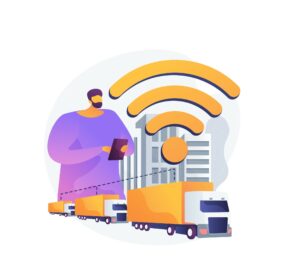
Use Cases: Wi-Fi tracking is used in industries such as healthcare, aviation, and logistics.
Pros of Wi-Fi:
- Easy to implement
- Real-time updates
- Potential to operate within existing networks
Cons of Wi-Fi:
- Inaccuracy
- High power consumption
- Congestion of networks
- Network instability risks
7. Bluetooth Low Energy (BLE)
This technology has a wide range and low power consumption, making it ideal for asset tracking. BLE systems usually use a combination of beacon and hub devices attached to their wireless network and can utilize smartphones or other devices that can connect to Bluetooth. This technology works best for projects where battery life is more important than the speed of data transfer.
Use Cases: Uses for BLE technology include warehouses, ports, vehicle fleets, livestock tracking, and worker tracking in construction or manufacturing sites.
Pros of BLE:
- Less expensive than other technologies
- Good for indoor tracking
- Well-established technology
- Enables real-time tracking
- Compatible with smartphones and other devices
- Low power usage
- Information can be uploaded to the cloud
Cons of BLE:
- Low bandwidth
- Less precise location in buildings
- Inaccuracy is possible when large quantities of BLE tags are close together
Technologies like SMATS Bluetooth Beacons can help your business easily track assets for a variety of use cases.


